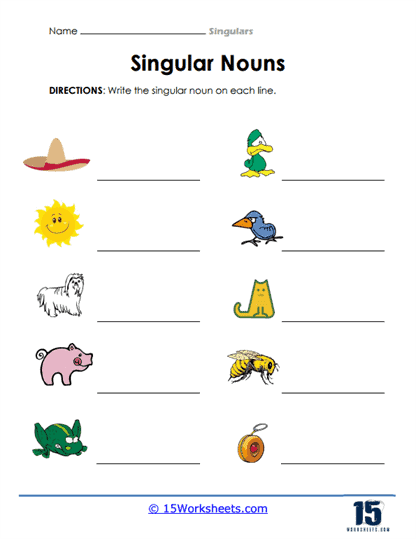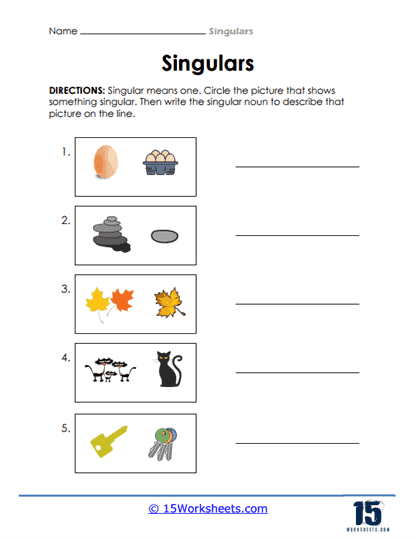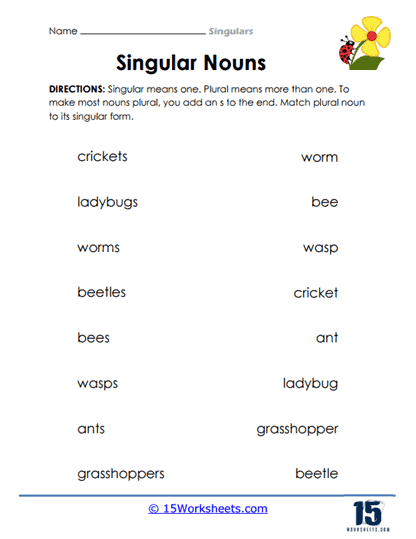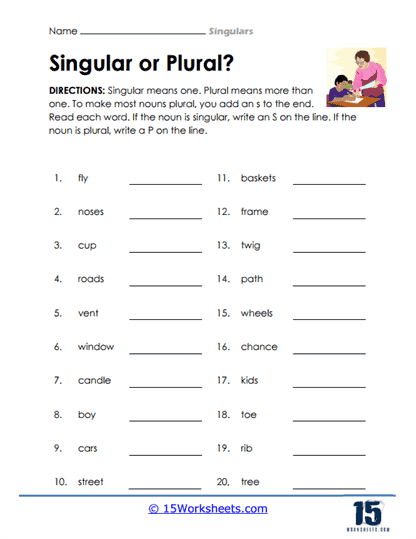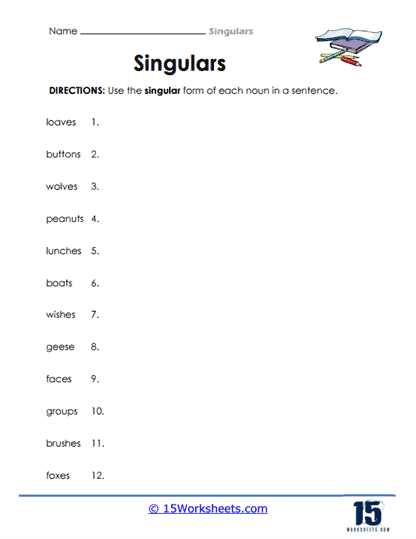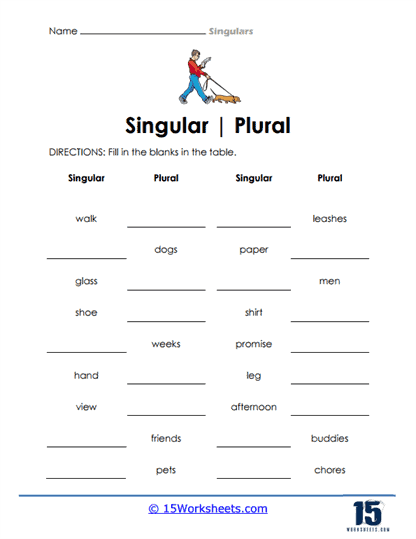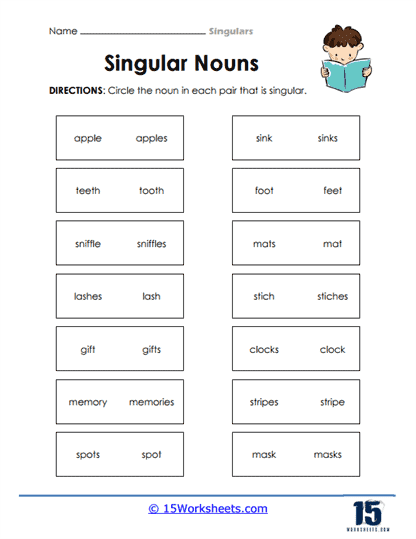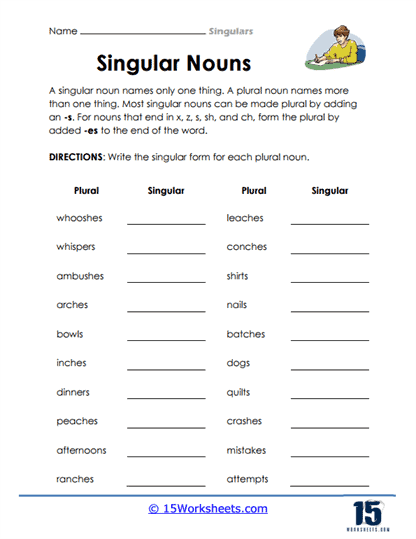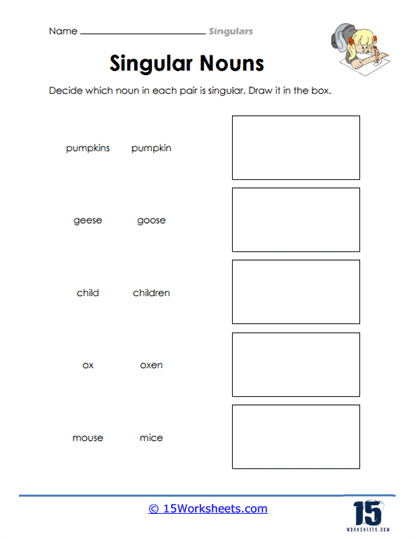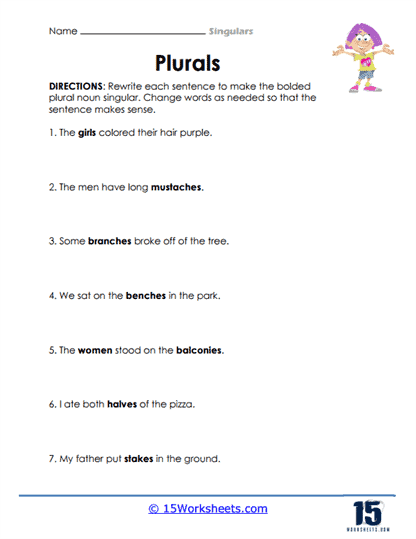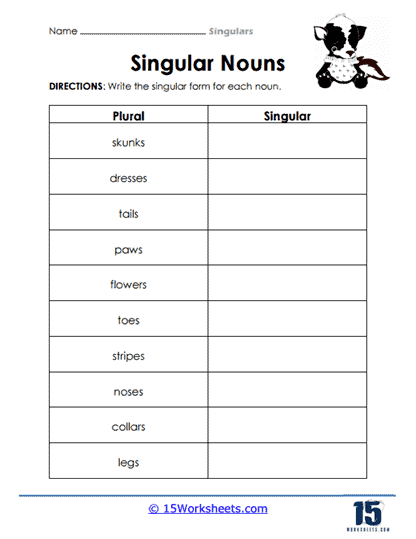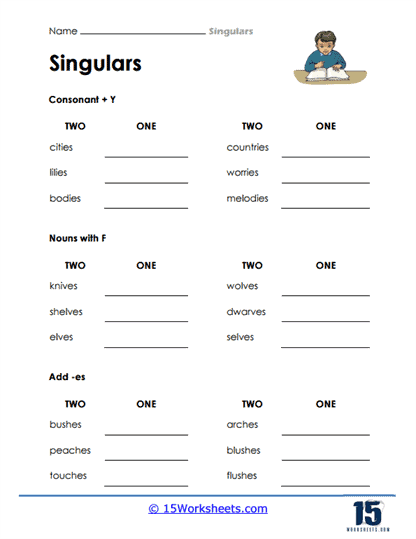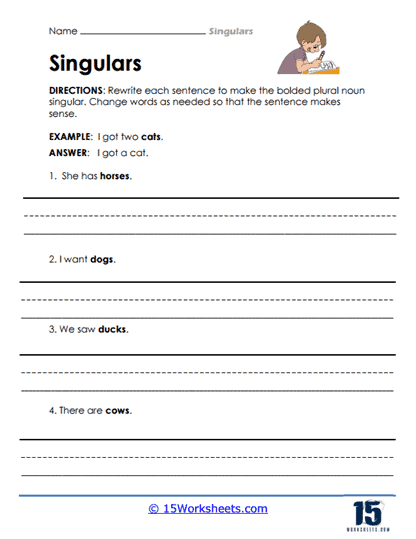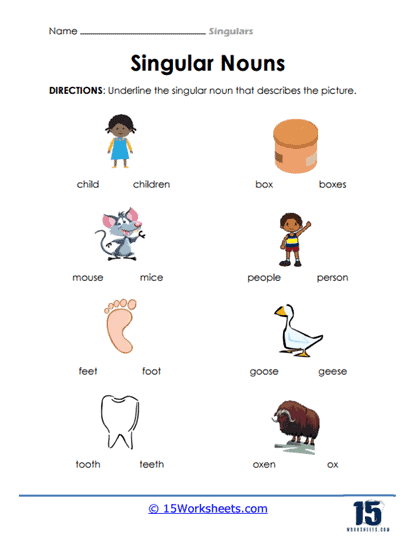Singulars Worksheets
All About These 15 Worksheets
This collection of Singulars worksheets are designed to help students learn and practice the use of singular nouns in English grammar. These worksheets provide several exercises that require students to identify and use singular nouns correctly in sentences.
These worksheets include matching exercises, identification activities, and rewriting tasks. They cover a range of singular nouns, including countable and uncountable nouns. By completing these worksheets, students will:
- Expand their vocabulary on singular nouns;
- Identify nouns and their singular forms using visual cues from illustrations or pictures;
- Understand the difference between singular nouns and plural nouns;
- And transfrom plural nouns into singular nouns and vice versa.
These worksheets are an important tool for teachers who want to help their students improve their grammar skills and develop accuracy in their writing. By completing these exercises, students can gain a better understanding of the rules of using singular nouns and practice applying them correctly in their writing. They are also useful for reinforcing grammar concepts taught in the classroom and helping students build confidence in their language abilities.
What are Singular Nouns and why do they matter?
Singular nouns are a type of noun that refer to one person, place, thing, or idea. They are used when referring to a single entity, as opposed to multiple entities. Here are some examples of singular nouns:
- Idea
- Planet
- Child
- Sun
- Shoe
Note that some nouns, such as “news” and “advice,” are technically uncountable nouns, but are considered singular in terms of their verb agreement. Here are some examples of sentences using singular nouns:
- His idea was brilliant.
- Jupiter is the largest planet in our solar system.
- The child rode his bike to the park.
- The sun sets in the west.
- My shoe is too tight.
In summary, singular nouns refer to one person, place, thing, or idea. They are an essential part of English grammar and are used in almost every sentence.
What are singular nouns and why do they matter?
To form the plural of most singular nouns, we typically add “-s” to the end of the word. However, there are some exceptions, such as nouns that end in “-y,” where we change the “-y” to “-ies.” For example, the plural of “baby” is “babies.” In addition, some nouns have irregular plural forms. For example, the plural of “man” is “men,” and the plural of “mouse” is “mice.”
It’s important to use the correct form of a noun in a sentence to ensure that the subject-verb agreement is correct. For example, the verb form changes depending on whether the subject is singular or plural. For example, we say “the dog barks” (singular) but “the dogs bark” (plural).
In summary, singular nouns refer to one person, place, thing, or idea, while plural nouns refer to two or more. Knowing the difference between singular and plural nouns is important for proper grammar and effective communication in English.

